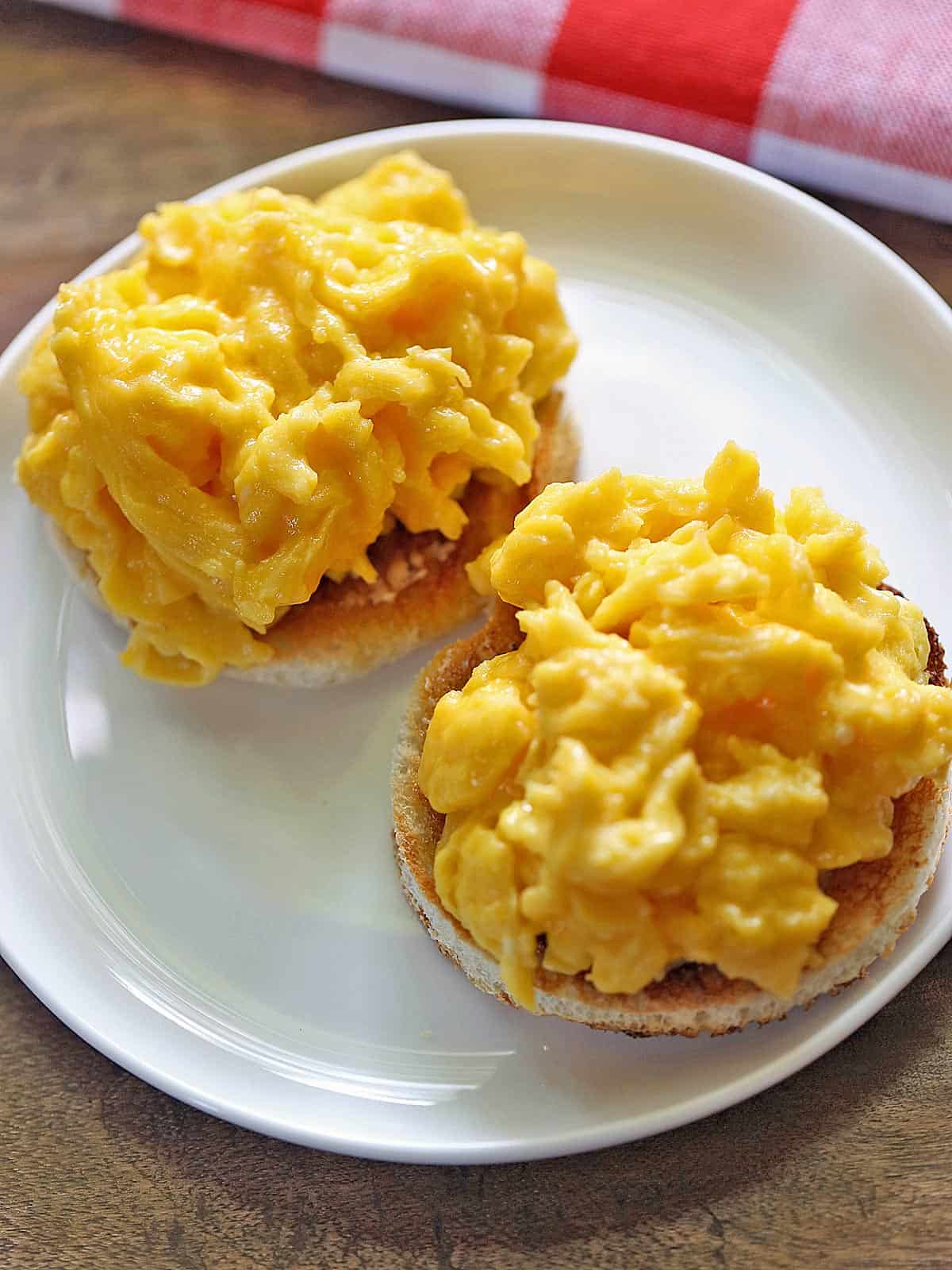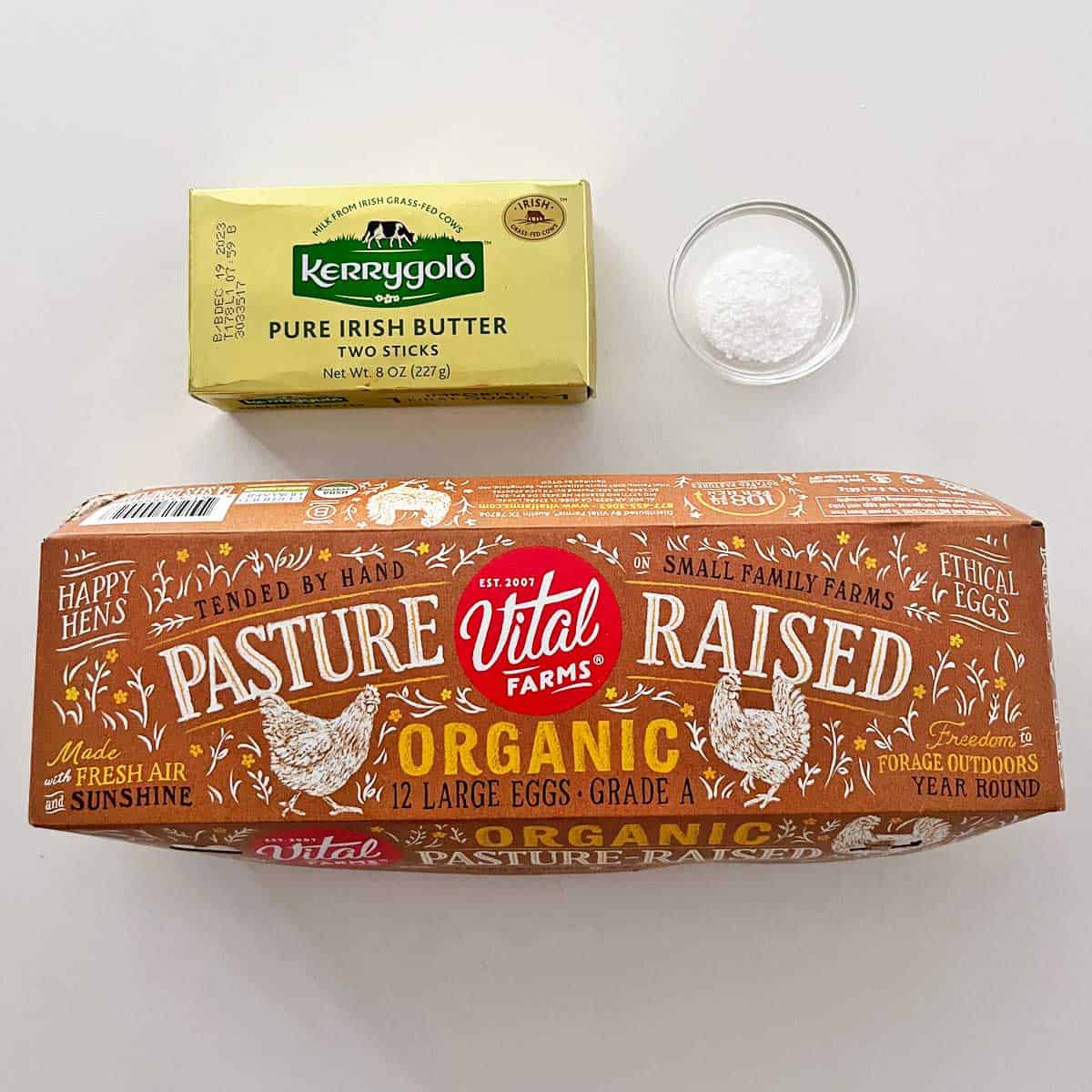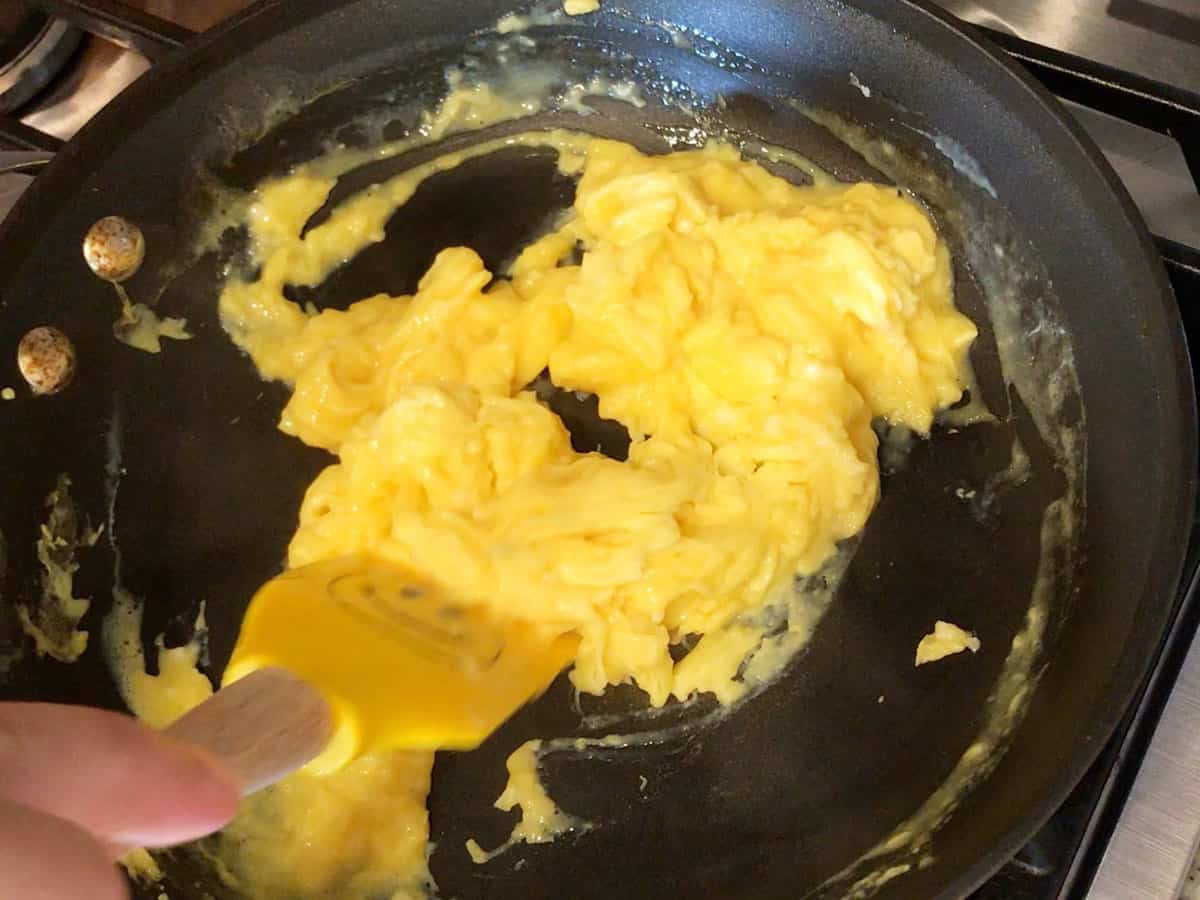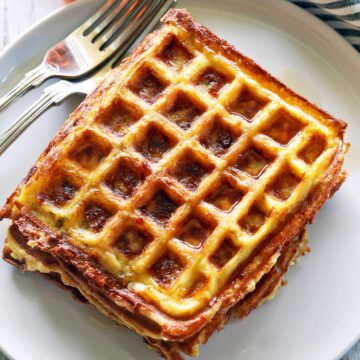These soft scrambled eggs are exceptionally creamy. The difference is in how you cook them - low and slow. And while they require some patience, the delicious result is well worth it.

Once I tried these amazingly creamy eggs, I could not go back to quickly scrambled, dry, and overcooked eggs. I was immediately hooked. And they're not difficult to make! While making them takes a little longer than making a regular egg scramble, they are so good, and their texture so wonderful, that I truly don't mind the extra time spent making them.
Ingredients and Variations

See the recipe card for exact measurements. Here are my comments on the ingredients.
- Eggs: I use large eggs in most of my recipes, and I'm partial to free-range eggs with gorgeous dark yellow yolks. But any large eggs will work.
- Sea salt: You can also add a pinch of freshly ground black pepper.
- Butter: Salted or unsalted - it doesn't make much of a difference. You can substitute different cooking fats for butter, such as bacon fat, duck fat (my personal favorite), ghee, or olive oil.
Instructions
Making these eggs is easy. The trick is gently pushing the eggs back and forth in the skillet rather than vigorously stirring them, and it's not difficult to master. The detailed instructions and step-by-step photos are included in the recipe card. Here's a quick overview.
Whisk the eggs with salt until they are light and fluffy. Melt butter in a nonstick skillet over medium-low heat. Add the eggs and let them set briefly. Your goal is to wait until the eggs are still liquid but their edges are set, as shown in the photo below:

Now, do your magic: push the eggs across the skillet, back and forth, until they form large, fluffy mounds and there is no more liquid in the skillet.

When the eggs are ready, they still glisten. They are in no way dry or overcooked. Serve them immediately. In the photo below, the eggs are served on toasted keto English muffins.

I agree - these eggs require patience but they're worth it. I double the butter, other than that, follow your instructions. Delicious every time. Thank you.
Matt
Read more comments
Recipe Tips
- The eggs will continue to cook after you remove them from the heat and even after you remove them from the skillet onto a plate, so it's a good idea to cook them a little less and allow them to finish cooking on the plate.
- Unless well-seasoned, scrambled eggs tend to have a mild flavor. You can add flavor by adding two tablespoons of grated Parmesan cheese and reducing the salt to ¼ teaspoon.
- If you like your eggs drier, try this recipe for fluffy scrambled eggs or this spinach and egg scramble.
- Storage: Generally speaking, you can keep cooked eggs in an airtight container in the fridge for up to three days and reheat them gently in the microwave. However, these eggs are slightly undercooked. So to be on the safe side, I don't like to keep them for longer than a day.
Serving Suggestions
These eggs are delicious just as they are on a plate, with a side of beef sausage, sausage patties, oven bacon, or microwave bacon.
You can sprinkle them with grated Parmesan after you plate them. I often serve them on toasted keto English muffins (as shown in the pictures on this page), 90-second bread, or savory chaffles. They can also be a part of a steak and eggs breakfast.
Recipe Card
Creamy Soft Scrambled Eggs
Video
Ingredients
- 4 large eggs
- ½ teaspoon sea salt
- 1 tablespoon butter
Instructions
- In a medium bowl, whisk the eggs with the salt until light and fluffy.
- Heat a 10-inch nonstick skillet over medium-low heat. Add the butter and swirl to coat. When the foam subsides, pour the eggs into the skillet.
- Allow the eggs to cook briefly until the edges begin to set. This will be a matter of seconds.
- With a rubber spatula, start pushing the eggs gently across the skillet, back and forth. Push rather than stir to keep the curds large and fluffy. If the eggs are cooking too fast, lower the heat to low.
- When there's no more liquid in the skillet and the eggs are just barely set and still moist and glistening, after about 2 minutes, divide them between two plates and serve.
Notes
- The eggs will continue to cook after you remove them from the heat, and even after you remove them from the skillet onto a plate. So it's a good idea to cook them a little less and allow them to finish cooking on the plate.
- The FDA recommends cooking eggs thoroughly.
- Unless well-seasoned, scrambled eggs tend to have a mild flavor. You can add flavor by adding two tablespoons of grated Parmesan cheese and reducing the salt to ¼ teaspoon.
- Storage: Generally speaking, you can keep cooked eggs in an airtight container in the fridge for up to three days and reheat them gently in the microwave. However, these eggs are slightly undercooked. So to be on the safe side, I don't like to keep them for longer than a day.
Nutrition per Serving
Save this Recipe!
We will also add you to our weekly newsletter. Unsubscribe anytime. See healthyrecipesblogs.com/privacy/ to learn how we use your email.
Disclaimers
Most recipes are low-carb and gluten-free, but some are not. Recommended and linked products are not guaranteed to be gluten-free. Nutrition info is approximate. Please verify it independently. The carb count excludes non-nutritive sweeteners. Please read these Terms of Use before using any of my recipes.











Matt says
I agree - these eggs require patience but they're worth it. I double the butter, other than that, follow your instructions. Delicious every time. Thank you.
Vered DeLeeuw says
I'm so glad you like this recipe, Matt! Thanks for the review.